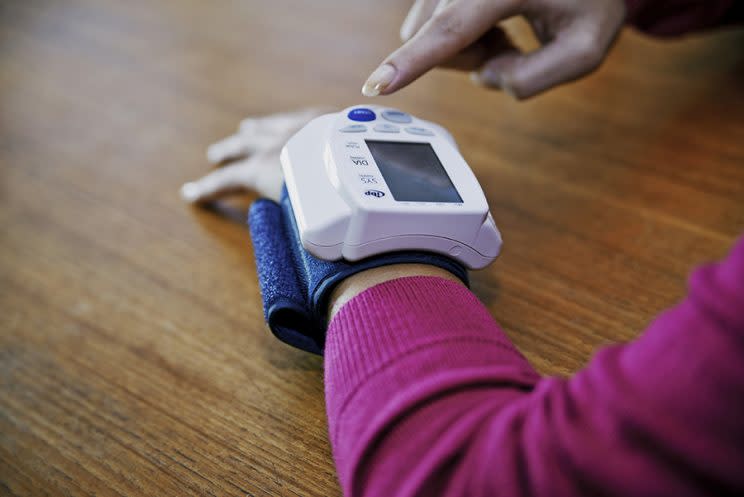Home Blood Pressure Monitors Are Wrong 70% of the Time

Your at-home blood pressure monitor may be providing false readings, says a study published in the July 2017 American Journal of Hypertension, which found that 70 percent of these devices are “unacceptably inaccurate.”
Medical researchers tested dozens of home monitors and discovered they were off the mark within 5 mmHg (millimeters of mercury, or a unit of pressure) about 70 percent of the time and were off by 10 mmHg about 30 percent of the time. Interestingly enough, they also concluded that the readings were more inaccurate in men than in women.
“High blood pressure is the number one cause of death and disability in the world,” said lead study author Jennifer Ringrose in a press release. “Monitoring for and treating hypertension can decrease the consequences of this disease. We need to make sure that home blood pressure readings are accurate.”
“As a family doctor, I am so happy about seeing this issue brought to light,” Jennifer Caudle, a family physician and assistant professor at Rowan University School of Osteopathic Medicine, tells Yahoo Beauty. “Time and time again, I see the home blood pressure cuffs of my patients not reading accurately. This is something that is widespread — it’s something I deal with on a daily basis.”
While the researchers admit it’s difficult to pinpoint the exact reasons for the incorrect measurements, they state that various factors — such as arm shape, arm size, and stiffness of blood vessels — are not always taken into account when a machine is designed. However, Caudle says you can take certain steps that help minimize inaccurate results. Number one on the list: Test yourself during the wind-down portion of your day.
“It’s important not to check your blood pressure when you’re running around, stressed, or have recently exercised,” she states. “You want to make sure that you’re sitting, resting comfortably for at least five minutes, preferably 10 minutes. I’d do it at the end of the day, once you’ve relaxed.”
And the way you’re seated is critical, as well. The American Heart Association (AHA) advises to sit with your back straight and supported on a sturdy chair with both feet flat on the floor. “Make sure that your arm is resting at the level of your heart, so you might want to put it on a table or desk,” adds Caudle. “Plus, the cuff must be placed on your bare skin, not over clothing.”
Also, she says to avoid caffeine, tobacco, and alcohol for at least 30 minutes before using the monitor “because all of those factors can increase your blood pressure.”
When it comes to choosing a home blood pressure device, the AHA recommends purchasing an automatic, cuff-style, bicep (upper-arm) monitor. It’s imperative to make sure the cuff fits your arm properly, which can be done by measuring around your upper arm.
“If it’s too small or too big, it can affect the reading,” explains Caudle. “Your doctor can help you figure out the size you need.”
Your safest bet: Bring the home device to your physician’s office.
“Because there are so many monitors on the market and all different types of cuffs have inaccurate and accurate readings, having your blood pressure cuff checked against your doctor’s is really the first thing you should do,” she concludes.
Read more from Yahoo Style + Beauty:
Follow us on Instagram, Facebook, and Pinterest for nonstop inspiration delivered fresh to your feed, every day. For Twitter updates, please follow @YahooStyle and @YahooBeauty.

